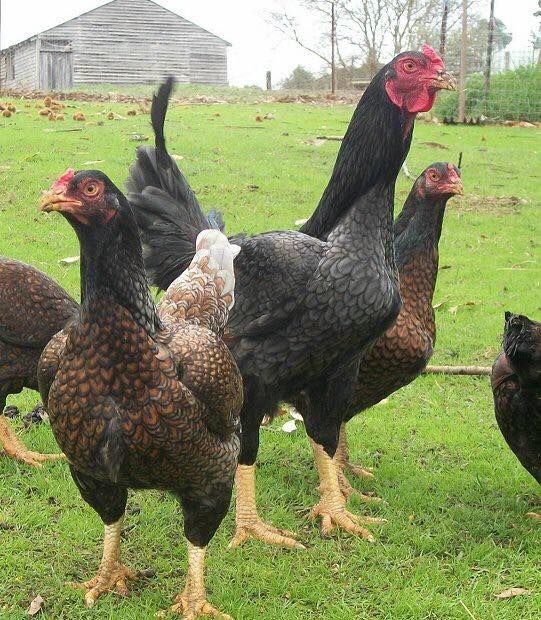
RARE BREEDS TRUST OF AUSTRALIA
powered by TidyHQPoultry - Rare Hardfeather Chickens
Poultry - Rare Hardfeather Chickens
| About | The Categories ! The List | Breed Profiles | Australian Breeds | Breeder Directories | Clubs | Submit an update |
About
The Hardfeather Chicken rare listings below are derived from voluntary submissions to the 2024 Poultry Census of the Rare Breeds Trust of Australia (RBTA) as well as from data sourced from selected shows, and cross referencing to rare poultry breeds lists and the 2021 Poultry Census. The RBTA listings are at the level of breed and size (where relevant) only.
Rare varieties (other than for Turkeys and Guinea Fowl) are not included in the RBTA lists. Please see the listings of the rare poultry associations for rare varieties:
For the full listing of all rare poultry breeds (Chickens - Hardfeather and Softfeather, Ducks, Geese, Turkeys and Guinea Fowl please link to the Poultry 2024 Watchlist.
Image Australian Pit Game
The Categories
For detailed information on the rare categorisation please link to the 2024 Poultry Census overview page. The rare categories are:
- Critical: At high risk of loss and/or in recreation.
- Of Concern: Low presence and/or low breeding flock ratios.
- Watch: Reasonable presence. Higher breeding flock uptake needed to be safe.
The Rare Poultry Lists also note Australian developed breeds whether rare or not.
The Rare Hardfeather List
Rare Hardfeather Breed Profiles
BREED |
BREED SUMMARY |
AMERICAN GAME FOWLLarge Status
|
Origin: United States of America |
ASILLarge Status
|
Origin: South Punjab and Sindh area of Pakistan, Indian States of Andhra Pradesh and Tamil Nadu |
AUSTRALIAN GAMELarge Status
|
Origin: New South Wales, Australia. AUSTRALIAN BREED Photo J.T Dale |
AUSTRALIAN PIT GAMELarge Status |
Origin: New South Wales, Australia. AUSTRALIAN BREED |
INDIAN GAMELarge Status
|
Status (Large form): Watch Photo courtesy of Michelle Birchall. |
JUNGLE FOWLLarge Status
|
Origin: Asia |
MALAY GAMELarge Status
|
Origin: Asia (India, Mauritius, Malay Peninsula) |
MODERN GAMELarge Status
|
Origin: Britain |
SHAMOLarge Status
|
Origin: Japan |
SUMATRALarge Status
|
Origin: Asia, Sumatra |
Australian Breeds of Interest
BREED |
BREED SUMMARY |
AUSTRALIAN GAMELarge Status
|
Origin: New South Wales, Australia. AUSTRALIAN BREED Photo J.T Dale |
AUSTRALIAN PIT GAMELarge Status
|
Origin: New South Wales, Australia. AUSTRALIAN BREED Classification: Heavy and Light Breed Uses: Originally bred for cockfighting, Exhibition Egg Colour: Tinted Comb: Pea, Single or Triple, Small About: Developed in the 1900's, for cockfighting, by British soldiers in New South Wales, the Australian Pit Game is one of the most loosely standardised breeds in Australia. It can be large or small, single or pea combed, any colour and cock feathered, hen feathered, tasselled or muffled. Due to their ancestry as fighting birds the standard does not regard colour as important but instead focuses on health and vigour. Carriage should be proud and aggressive looking, with movements quick and "ready for any emergency". They have been standardised since 1936. Weight: Large Heavy Male over 2.7kg; Heavy Female over 2.0kg. Light Male under 2.7kg; Light Female under 2.0kg. Bantam Male under 1.36kg; Female under 1.135kg. |
Breeder Directories
You can find the Rare Breeds Trust of Australia Poultry Directories here. Find out more on how to get listed.
Breed Clubs
- Australian Game Club of Australia
- Australian Pit Game Club of Australia. email australianpitgameclub@gmail.com
- The Game Club of Victoria Inc.
- Game Fowl Club of WA
- Indian Game Club of Australia
- Indian Game Club of Victoria
- Malay Game Club of Australia
- Modern Game Club of Australia. email moderngameclubaus@gmail.com
Please email rarebreedstrustau@gmail.com with the name of your Club and/or preferred contact details if you would like to be listed here.
Submit an Update
If you have a breeding flock and weren't in a position to contribute to the 2024 Poultry Census you can still provide the RBTA with details. We will collate additional submissions every 3-6 months and update the listing where additional numbers of male and female breeding age birds changes a rare status categorisation.
Submit your data using the online form.
Our Privacy Statement sets out how we deal with submitted data.










